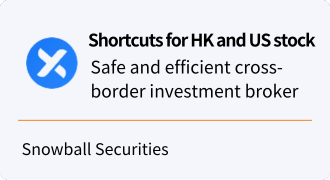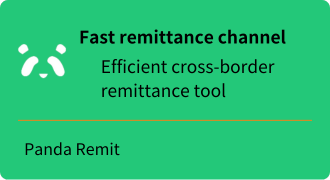New U.S. stock stop rules explained for retail investors.
Throughout my quantitative trading and financial self-publishing career, every change in the U.S. stock market has touched my heart. Recently, the adjustments to the U.S. stock up/down limit rules have caught my special attention. This seemingly technical change actually concerns every investor, especially those of us overseas investors who are far away from China.
Imagine you are driving a high-speed sports car when suddenly there is a sharp turn ahead. At this point, the on-board system automatically intervenes and adjusts its speed to ensure that you safely negotiate the corner. The up-and-down limit rules for U.S. stocks are like this smart system, working to protect investors from excessive risk during times of dramatic market volatility. Today, let's take a closer look at how this “financial safety belt” works and how it affects our investment strategies.
Ⅰ. The heart of the U.S. stock market's up-and-down limit rule
Unlike the A-share market, which we are all familiar with, the U.S. stock market's limit rule is more complex and flexible. It consists of two main aspects: the limit on upward and downward movement of a single stock and the market-wide melting mechanism.
Up and down limits for individual stocks
US stocks do not have a unified up and down limit like A-shares, but adopt a more flexible mechanism:
- Up and down limit: Usually 10% up or down from the closing price of the previous trading day.
- Trigger Consequences: When the stock price reaches the limit, it will not stop trading immediately, but enter the “limit bidding” phase.
- Limit Bidding: This phase allows trading to continue, but all orders must be within the limit.
This mechanism limits excessive volatility while retaining some trading flexibility. In my quantitative trading practice, this mechanism often provides interesting arbitrage opportunities. For example, when a stock triggers an upside limit, we may look at the underlying options market for potential pricing biases.
Market-wide meltdowns
A market-wide meltdown is the “last line of defense” against extreme market conditions:
- Trigger Criteria: Based on the decline in the S&P 500 Index.
- Three levels of meltdown:
- Level 1 (7% decline): trading is suspended for 15 minutes.
- Level 2 (13% drop): another 15-minute suspension.
- Level 3 (20% drop): stops trading for the rest of the day.
This mechanism was triggered several times during the 2020 New Crown epidemic, effectively easing market panic. I remember at the time, many Chinese investors experienced the US stock meltdown for the first time and have been discussing the phenomenon on social media. It also reminds us of the importance of understanding market rules.
Ⅱ. Changes and impact of the new rules
The latest rule adjustments are mainly focused on the limit of upward and downward movement of a single stock:
- Expansion of the scope of limit: from mainly targeting large-cap stocks, it has been expanded to cover more small and mid-cap stocks.
- Trigger conditions refined: different trigger thresholds are set according to the price range of the stock.
- Duration optimization: the duration of limit bidding is dynamically adjusted according to stock characteristics and market conditions.
These changes are designed to provide finer-grained market protection while maintaining market dynamics and efficiency. For us quantitative traders, this means that our algorithmic models need to be updated to accommodate the new market dynamics. I am working with the team to redesign our trading strategies to remain competitive in this new environment.
Ⅲ. Example analysis: dramatic volatility in tech stocks
Let's look at a concrete example. Let's assume that a highly regarded mid-cap tech company is suddenly hit with favorable news after the opening bell on a particular day, and its stock price rises rapidly.
- 9:30 AM: Opening price $100
- 9:45 AM: stock price reaches $110, triggering the limit of increase
- 9:45 AM - 10:00 AM: enter limit bidding phase
- 10:00 AM: Normal trading resumes and the stock price fluctuates between $108-$112
In this process, the price limit mechanism effectively controls excessive speculation and gives market participants sufficient time to digest new information. As investors, we need to pay close attention to these points in time, which often hold important trading opportunities.
Ⅳ. Impact on different types of investors
- Long-term value investors: The impact is relatively small, but can take advantage of short-term volatility to buy low and sell high.
- Day traders: need to pay more attention to price triggers and adjust trading strategies.
- Quantitative trading strategies: may need to redesign algorithms to take into account new price limits.
In my quantitative trading, we are actively adapting our models to these new rules. This is not only a challenge, but also an opportunity. I believe that investors who are able to quickly adapt to market changes tend to stand out from the competition.
Ⅴ. Investor Response Strategies
- Understand the rules: Familiarize yourself with the new up/down limit rules, which is the basis for developing an investment strategy.
- Set up alerts: Utilize trading software to set up price alerts to capture market changes in a timely manner.
- Diversify: Reduce the impact of volatility in a single stock by not concentrating all your money in a single stock.
- Care about liquidity: During the limit phase, stock liquidity may be reduced, pay attention to adjust the trading volume.
- Keep Calm: Don't blindly follow the trend when the market fluctuates, rational analysis is the way to win.
Every change in market rules is an opportunity to learn and grow. The financial market changes rapidly, but our learning never stops. I will continue to follow developments in this space and share the latest insights and strategies in this blog to ensure you always have the most accurate information.
If you have any questions or thoughts, feel free to leave them in the comments section to discuss. Your feedback and questions will also help me to continuously improve the content. Let's work together to build a mutual learning investment community and grow together in this ever-changing market!
Finally, please remember: investment risk, enter the market need to be cautious. The information provided in this article is for reference only and does not constitute any investment advice. Before making any investment decision, please be sure to conduct adequate research and consideration based on your own financial situation and risk tolerance.






